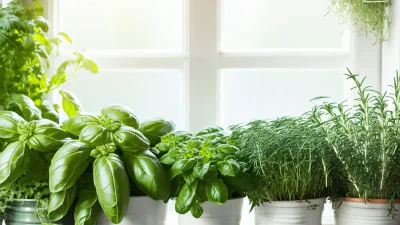How to Create a Sustainable Garden in Your Urban Space
Urban gardening has become more than just a hobby—it’s a movement towards sustainability and self-sufficiency. In this blog, we’ll guide you through creating your own sustainable garden, even if you’re limited by space. Let’s dive into the essential steps and tips to help you grow a green thumb while minimizing your environmental impact.
Why Sustainable Gardening Matters
Creating a sustainable garden isn’t just about growing plants; it’s about fostering a harmonious relationship with nature. By using eco-friendly practices, you can reduce waste, conserve water, and support local ecosystems. Here’s why sustainable gardening is worth the effort:
- Saves Resources: Sustainable gardens use fewer resources like water and energy, making them environmentally friendly.
- Promotes Biodiversity: By planting native species, you provide habitats for local wildlife, including pollinators essential for our food supply.
- Reduces Carbon Footprint: Plants absorb carbon dioxide, helping to mitigate the effects of climate change.
Picking the Perfect Space
Even in urban areas, there’s always space for a garden. Here’s how to choose the best spot:
- Assess Sunlight: Most plants need at least six hours of sunlight daily. Check your area for optimal sun exposure.
- Consider Soil Quality: If your soil is poor, consider raised beds or containers filled with high-quality potting mix.
- Maximize Vertical Space: Use trellises, hanging baskets, or wall-mounted planters to save space and add visual interest.
Selecting the Right Plants
Choosing plants that thrive in your environment is key. Here are some tips:
- Native Plants: They’re adapted to local conditions, requiring less water and care.
- Drought-Resistant Varieties: Perfect for areas with water restrictions or dry climates.
- Pollinator-Friendly Flowers: Attract bees and butterflies with nectar-rich blooms like lavender and coneflowers.
Composting and Water Conservation
Your garden’s health depends on good soil and efficient water use. Here’s how to achieve both:
“Composting is the ultimate recycling. It transforms kitchen scraps into nutrient-rich soil, reducing waste and enhancing plant growth.”
- Start Composting: Use food scraps, leaves, and yard waste to create organic compost. This enriches your soil without synthetic fertilizers.
- Install a Rain Barrel: Collect rainwater for irrigation, reducing your reliance on tap water.
- Drip Irrigation: Water plants at the roots to minimize evaporation and ensure efficient use of water.
Maximizing Your Space
In urban settings, every inch counts. Here are some space-saving ideas:
- Container Gardening: Use pots, buckets, or even recycled containers to grow herbs, vegetables, and flowers.
- Vertical gardens: Install a vertical garden on walls or fences to save space while adding greenery.
- Multipurpose Plants: Choose plants that serve multiple purposes, like edible flowers or herbs that attract beneficial insects.
Maintaining Your Sustainable Garden
A sustainable garden thrives with minimal intervention. Here’s how to keep it healthy:
- Regular Mulching: Apply mulch around plants to retain moisture, suppress weeds, and regulate soil temperature.
- Natural Pest Control: Use companion planting or organic deterrents like neem oil to keep pests at bay without harmful chemicals.
- Seasonal Maintenance: Clean up debris, prune plants, and prepare for the next growing season to ensure year-round productivity.
Conclusion
Creating a sustainable garden in your urban space is an achievable goal with the right approach. By focusing on eco-friendly practices, smart plant selection, and efficient use of resources, you can enjoy the benefits of fresh produce, beautiful blooms, and a healthier environment. Start small, experiment, and watch your green oasis flourish!
Ready to get started? Check out our guide for more tips on urban gardening tools and supplies.





